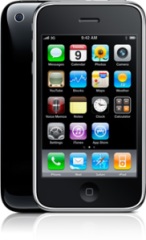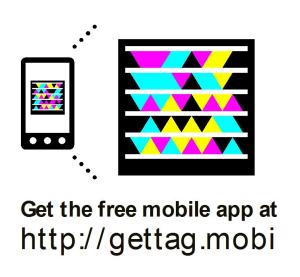by tradesmeninsights | Sep 27, 2011 | Marketing Tips, Social Marketing, Traditional Marketing
QR codes in the world of marketing are relatively new and as such a novelty. The problem is, if you don’t use them correctly, they can do more harm than good, and if you turn off your target audiences by a simple thing like not using a QR code correctly, what might it do to the rest of your relationship with them?
For those who might be interested, we have a Trends in Mobile Media white paper that can be downloaded that will give you a pretty good overview of what’s currently available.
I recently read an interesting post in Social Media Examiner by Jeff Korhan titled, 5 Steps to a Successful QR Code Marketing campaign. Here are some highlights:
- Plan a strategy – You need to understand your target audience, have clear objectives and offer useful and valuable incentives.
- Create quality codes and test them – You only get one chance to make a first impression. There are many QR codes out there, the most popular being QR codes and Microsoft (MS) Tags. Do your homework when choosing one and then make sure to test it several times before making it live for the rest of the world to see.
- Link your codes to mobile friendly or mobile optimized sites – One of the biggest mistakes is linking to a traditional size page that you want to be read on a mobile device. Make sure where you link is optimized for mobile.
- Track performance with management tools – QR codes and MS tags have reporting sytems built in. They currently don’t go very deep, but I think it’s just a matter of time until they do. There are several other developers showing up, but it’s too early in the game to rate or recommend any.
- Deliver value and a favorable experience – That’s what the user who clicks on the code will remember. Did you WOW them with a video, did you give them a discount on the product?
I’d love to hear how you’re using QR codes and how successful you’ve been.
by tradesmeninsights | Dec 1, 2010 | Marketing Trends, Traditional Marketing
 It seems like these days that everything is moving as fast as a digital download. Information is at your fingertips with smartphones getting more and more popular and with access to everything you could possibly want to know in the palm of your hand.
It seems like these days that everything is moving as fast as a digital download. Information is at your fingertips with smartphones getting more and more popular and with access to everything you could possibly want to know in the palm of your hand.
We see this in the news media as well – stories no longer take weeks or days to break, but are posted within a few minutes so you can know what is happening half way across the world in seconds. It is with this trend of fast information, and the technology of mobile media that fuels it, that marketers are forced to keep up.
More and more people are getting their information from their smartphones and carry them with them at all times, so marketers need to reach their targets where they are absorbing information.
This white paper reviews the current state of affairs and touches on QR codes and Microsoft Tags and highlights best practices.
A free copy for download is available. Click here to sign up.

by tradesmeninsights | Nov 24, 2010 | Marketing Tips, Marketing Trends, Traditional Marketing
Yesterday, Aylie Fifer from Sonnhalter gave us an overview of what QR codes were and how they can be used. Today she’ll talk about the differences between Microsoft tags and Traditional QR codes.
If you want to see how it works, print out this page, download the app and scan the tag with your phone to see where it takes you. Or, if you already are familiar with this, scan the tag off the computer screen.
 In our last post, we explained what QR codes are. Today, we want to tell you about the proprietary Microsoft Tags and what advantages they have over the traditional QR codes.
In our last post, we explained what QR codes are. Today, we want to tell you about the proprietary Microsoft Tags and what advantages they have over the traditional QR codes.
Microsoft Tags:
A Microsoft Tag IS a QR code – QR code means “Quick response code” and is a 2-dimensional, scan-able code. By definition, a Tag is a QR code.
The MT is a “High Capacity Color Barcode.” What this really means is more information can be packed into the code and can be used in color or black and white. This is what allows users to create an image over the code if wanted.
QR Codes vs. Microsoft Tags:
QR Readers:
You need to download a QR Code reader app to your phone in order to enable this to work and not a lot of people know about it, know how to do it, or want to spend the money on the app. Here are some recommended ones. Please note that not all QR readers will read all QR codes. For instance, Microsoft Tags have a special reader called “Tag Reader” that does not work on generic QR codes or vice-versa.
A lot of the phones that are currently being manufactured are being built with a reader built in. We are going to see this surge over the next 6 months – 1 year, I would guess, but it really is quite simple to download an app. We also will see the acceptable platforms expand. As I mentioned, this is already a huge phenomenon in Japan and is a more developed market for use of QR codes meaning people are more accustomed to seeing and using QR codes over there versus the U.S which is a less mature market at this point in comparison.
Metrics:
The other major difference with most QR codes and Microsoft Tags is the metrics. With most QR codes, you can track traffic by using Google Analytics to track the codes with unique URLs for each Tag. However, Microsoft Tag Manager actually will track the scans of each code. This way, we have one more level of information. With just Google Analytics, we only see how many people went through to the URL. With the added layer of information, we can see if someone scanned and stopped mid-process or had another issue.
Microsoft Tags actually have a lot of reporting available in the free version too. Here is a list of the reports available with the MS Tag Manager:
- Heat Map
- Represents where Tags were scanned on an interactive map
- Daily Scans
- Charts the number of scans per day for a single Tag
- Scan Totals
- Charts the total number of scans for each Tag in a category (over the lifetime of a tag)
- Scan Totals by Category
- Charts the total number of scans for each of your categories
- Daily Scans (Multiple Tags)
- Charts the number of scans per day for multiple selected tags in a category
- Daily Scans (Category Totals)
- Charts the total scans per day for all tags in a category
- Daily Scans (Compare Categories)
- Compares the total number of daily scans for different categories
In addition to all the reporting, it also provides the option to set a date limit for the Tags. And, of course, you can change the URL on the fly, an attribute which we find especially helpful.
Even though the Microsoft Tag has only been out for a year, I think it is going to rise to the top not only because of its innate high-capacity to hold information (it was developed to be more robust), but also the added tracking and reporting features and the fact that you can also brand each Tag by overlaying a picture or a logo over the Tag and it will still be readable. I think that once the market gets used to using QR codes in general, this feature will become more appealing to users and publishers/marketers, so I think it is a better long-term option. And because it can hold more information, the Microsoft Tags can be printed much smaller than most QR codes. There are micro QR codes, but a micro QR code only lets you hold 35 characters of data – which really doesn’t allow you to do a whole lot.
The other nice thing is that it has a high tolerance for reading damaged tags. For a lot of the QR codes, if the code is damaged in any way, the phone camera cannot translate the code. When developing the Tags, Microsoft took into consideration the low-quality of most cell phone cameras (blurred shot, lack of autofocus) and adjusted the tolerance for a bad photo or camera so you don’t need an exact scan or a perfect picture like most QR Code scans require.
As far as the readers go – that is my other concern. Not all QR readers work on all QR codes. Most QR generation sites provide you with a listing of acceptable phone platforms. Some of the major ones, in defense of the QR readers, do support the more popular phones like iPhone and Android, and Blackberry. Microsoft Tag Reader supports all the major phone platforms and is rapidly adding new platforms. It is a free download for the Tag Reader versus some of the better QR code readers you have to pay for (usually $1.99 or less, but still…).
While there have been a lot of companies using QR codes, I would argue that there are the same amount using Microsoft Tags. Fox for instance, used them to promote Avatar. Publications like Food & Wine, Details, Conde Nast Traveler, Entertainment Weekly, Glamour, Golf Digest, Ladies Home Journal, Lucky Magazine, Self, Seventeen, Traditional Home, and TV Guide have used tags. As well as some big companies and brands such as Campbell’s, Dominos, Dr Pepper, Ford, General Mills, Goodyear, Kraft, Mazda, Mountain Dew, Procter & Gamble, Porsche, Sprint, Toyota and Whole Foods.
At the end of the day, each have their own merits, but at this point in time, to me the better long-term choice seems to be Microsoft Tag because of its innate capabilities. No QR code (as of this moment, I know there are some sites in the works) can offer as much as the Tag can.
If you missed Part 1, click here to view.



